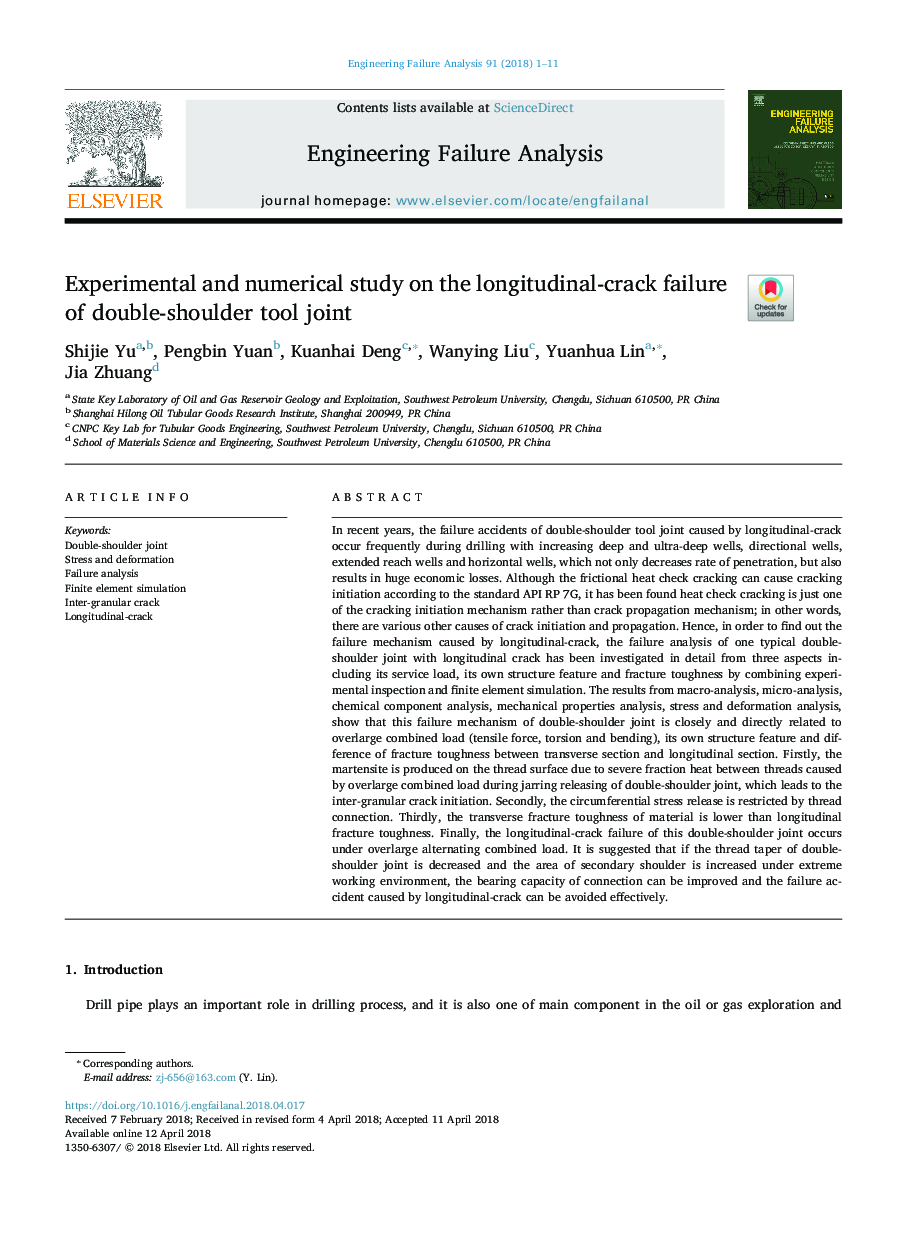| کد مقاله | کد نشریه | سال انتشار | مقاله انگلیسی | نسخه تمام متن |
|---|---|---|---|---|
| 7167182 | 1462935 | 2018 | 11 صفحه PDF | دانلود رایگان |
عنوان انگلیسی مقاله ISI
Experimental and numerical study on the longitudinal-crack failure of double-shoulder tool joint
ترجمه فارسی عنوان
بررسی تجربی و عددی بر شکست طولی دو طرفه ابزار مشترک
دانلود مقاله + سفارش ترجمه
دانلود مقاله ISI انگلیسی
رایگان برای ایرانیان
کلمات کلیدی
مفصل دو طرفه، استرس و تغییر شکل، تجزیه و تحلیل شکست شبیه سازی عنصر محدود، کرک بین گرانول، کرنش طولی
موضوعات مرتبط
مهندسی و علوم پایه
سایر رشته های مهندسی
مهندسی صنعتی و تولید
چکیده انگلیسی
In recent years, the failure accidents of double-shoulder tool joint caused by longitudinal-crack occur frequently during drilling with increasing deep and ultra-deep wells, directional wells, extended reach wells and horizontal wells, which not only decreases rate of penetration, but also results in huge economic losses. Although the frictional heat check cracking can cause cracking initiation according to the standard API RP 7G, it has been found heat check cracking is just one of the cracking initiation mechanism rather than crack propagation mechanism; in other words, there are various other causes of crack initiation and propagation. Hence, in order to find out the failure mechanism caused by longitudinal-crack, the failure analysis of one typical double-shoulder joint with longitudinal crack has been investigated in detail from three aspects including its service load, its own structure feature and fracture toughness by combining experimental inspection and finite element simulation. The results from macro-analysis, micro-analysis, chemical component analysis, mechanical properties analysis, stress and deformation analysis, show that this failure mechanism of double-shoulder joint is closely and directly related to overlarge combined load (tensile force, torsion and bending), its own structure feature and difference of fracture toughness between transverse section and longitudinal section. Firstly, the martensite is produced on the thread surface due to severe fraction heat between threads caused by overlarge combined load during jarring releasing of double-shoulder joint, which leads to the inter-granular crack initiation. Secondly, the circumferential stress release is restricted by thread connection. Thirdly, the transverse fracture toughness of material is lower than longitudinal fracture toughness. Finally, the longitudinal-crack failure of this double-shoulder joint occurs under overlarge alternating combined load. It is suggested that if the thread taper of double-shoulder joint is decreased and the area of secondary shoulder is increased under extreme working environment, the bearing capacity of connection can be improved and the failure accident caused by longitudinal-crack can be avoided effectively.
ناشر
Database: Elsevier - ScienceDirect (ساینس دایرکت)
Journal: Engineering Failure Analysis - Volume 91, September 2018, Pages 1-11
Journal: Engineering Failure Analysis - Volume 91, September 2018, Pages 1-11
نویسندگان
Shijie Yu, Pengbin Yuan, Kuanhai Deng, Wanying Liu, Yuanhua Lin, Jia Zhuang,
